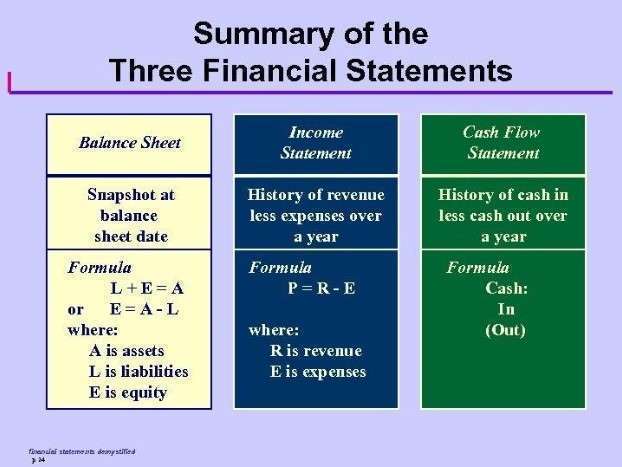⬆︎ Da click y escríbenos
2 4: The Basic Accounting Equation Business LibreTexts

The purpose of this article is to consider the fundamentals of the accounting equation and to demonstrate how it works when applied to various transactions. The balance sheet is a more detailed reflection of the accounting equation. It records the assets, liabilities, and owner’s equity of a business at a specific time.
This ensures that the total value of a company’s assets always equals the total value of its liabilities and shareholder equity. In above example, we have observed the impact of twelve different transactions on accounting equation. The accounting equation is the basic element of the balance sheet and the primary principle of accounting. It helps the company to prepare a balance sheet and see if the entire enterprise’s asset is equal to its liabilities and stockholder equity. All assets owned by a business are acquired with the funds supplied either by creditors or by owner(s). In other words, we can say that the value of assets in a business is always equal to the sum of the value of liabilities and owner’s equity.
The Basic Accounting Equation and the Double Entry Bookkeeping System
Revenues and expenses are often reported on the balance sheet as “net income.” An Accounting Equation is also called the Balance Sheet Equation. We all know that we record all the business transactions using the Dual Aspect concept.
Long-term liabilities cover loans, mortgages, and deferred taxes. We’ll explain what that means, along with everything else you need to know about the accounting equation as we go on. Cash (asset) will reduce by $10 due to Anushka using the cash belonging to the business to pay for her own personal expense. As this is not really an expense of the business, Anushka is effectively being paid amounts owed to her as the owner of the business (drawings). The cash (asset) of the business will increase by $5,000 as will the amount representing the investment from Anushka as the owner of the business (capital).
What is the Basic Accounting Equation and what does it mean for a company’s financial health
If a business buys raw materials and pays in cash, it will result in an increase in the company’s inventory (an asset) while reducing cash capital (another asset). Because there are two or more accounts affected by every transaction carried out by a company, the accounting system is referred to as double-entry accounting. For a company keeping accurate accounts, every business transaction will be represented in at least two of its accounts.
Assets represent the valuable resources controlled by a company, while liabilities represent its obligations. Both liabilities and shareholders’ equity represent how the assets of a company are financed. If it’s financed through debt, it’ll show as a liability, but if it’s financed through issuing equity shares to investors, it’ll show in shareholders’ equity. For every transaction, both sides of this equation must have an equal net effect. Below are some examples of transactions and how they affect the accounting equation.
Basic Accounting Equation Explained
This equation is used to track a company’s financial health and ensure that its assets are not being overspent. A company’s quarterly and annual reports are basically derived directly from the accounting equations used in bookkeeping practices. These equations, entered in a business’s general ledger, will provide the material that eventually makes up the foundation of a business’s financial statements. This includes expense reports, cash flow and salary and company investments. This straightforward relationship between assets, liabilities, and equity is considered to be the foundation of the double-entry accounting system. The accounting equation ensures that the balance sheet remains balanced.
We will now consider an example with various transactions within a business to see how each has a dual aspect and to demonstrate the cumulative effect on the accounting equation. These may include loans, accounts payable, mortgages, deferred revenues, bond issues, warranties, and accrued expenses. The shareholders’ equity number is a company’s total assets minus its total liabilities.
The Basic Accounting Equation
Put another way, it is the amount that would remain if the company liquidated all of its assets and paid off all of its debts. The remainder is the shareholders’ equity, which would be returned to them. The double-entry practice ensures that the accounting equation always remains balanced, meaning that the left side value of the equation will always match the right side value. It can be defined as the total number of dollars that a company would have left if it liquidated all of its assets and paid off all of its liabilities. This transaction affects both sides of the accounting equation; both the left and right sides of the equation increase by +$250.
- As a core concept in modern accounting, this provides the basis for keeping a company’s books balanced across a given accounting cycle.
- Now, there’s an extended version of the accounting equation that includes all of the elements (described in the section above) that comprise the Owner’s Equity.
- The accounting equation is based on the premise that the sum of a company’s assets is equal to its total liabilities and shareholders’ equity.
- It helps the company to prepare a balance sheet and see if the entire enterprise’s asset is equal to its liabilities and stockholder equity.
- Because of the two-fold effect of business transactions, the equation always stays in balance.
- Additionally, it doesn’t completely prevent accounting errors from being made.
It’s essentially the same equation because net worth and owner’s equity are synonymous with each other. Other names for owner’s equity you may face are also net assets, or stockholder’s equity (for public corporations). As we previously mentioned, the accounting equation is the same for all businesses. It’s extremely important for businesses in that it provides the basis for calculating various financial ratios, as well as for creating financial statements. The inventory (asset) of the business will increase by the $2,500 cost of the inventory and a trade payable (liability) will be recorded to represent the amount now owed to the supplier.
The owner’s equity is the share the owner has on these assets, such as personal investments or drawings. The assets of the business will increase by $12,000 as a result of acquiring the van (asset) but will also decrease by an equal amount due to the payment which of the following is the basic accounting equation of cash (asset). In other words, the total amount of all assets will always equal the sum of liabilities and shareholders’ equity. The accounting equation is a concise expression of the complex, expanded, and multi-item display of a balance sheet.

Archives
- February 2024
- January 2024
- December 2023
- November 2023
- October 2023
- September 2023
- August 2023
- July 2023
- June 2023
- May 2023
- April 2023
- March 2023
- February 2023
- January 2023
- December 2022
- November 2022
- October 2022
- September 2022
- August 2022
- July 2022
- June 2022
- May 2022
- April 2022
- March 2022
- February 2022
- January 2022
- December 2021
- November 2021
- October 2021
- September 2021
- August 2021
- July 2021
- June 2021
- May 2021
- April 2021
- March 2021
- February 2021
- January 2021
- December 2020
- November 2020
- October 2020
- September 2020
- August 2020
- July 2020
- June 2020
- May 2020
- April 2020
- March 2020
- February 2020
- January 2020
- December 2019
- November 2019
- October 2019
- September 2019
- August 2019
- July 2019
- June 2019
- May 2019
- April 2019
- February 2019
- January 2019
- November 2018
- August 2018
- July 2018
- June 2018
- May 2018
- April 2018
- February 2018
- January 2018
- November 2017
- October 2017
- September 2017
- August 2017
- July 2017
- May 2017
- April 2017
- March 2017
- February 2017
- January 2017
- December 2016
- November 2016
- September 2016
- August 2016
- July 2016
- June 2016
- May 2016
- April 2016
- March 2016
- February 2016
- January 2016
- October 2015
- September 2015
- August 2015
- July 2015
- June 2015
- April 2015
- March 2015
- February 2015
- January 2015
- November 2014
- October 2014
- September 2014
- August 2014
- July 2014
- June 2014
- May 2014
- April 2014
- March 2014
- February 2014
- December 2013
- October 2013
- August 2013
- April 2013
- February 2013
- January 2013
- December 2012
- November 2012
- August 2012
- July 2012
- April 2012
- February 2012
- January 2012
- September 2011
- August 2011
- June 2011
- May 2011
- April 2011
- September 2010
- June 2010
- May 2010
- April 2010
- February 2010
- October 2009
- July 2009
- June 2009
- April 2009
- February 2009
- January 2008
- November 2007
- October 2007
- July 2007
- February 2007
- October 2006
- June 2006
- May 2006
- April 2006
- September 2004
- April 2004
- January 2004
- April 2002
- March 2002
- July 2001
- May 1999
- May 1997
